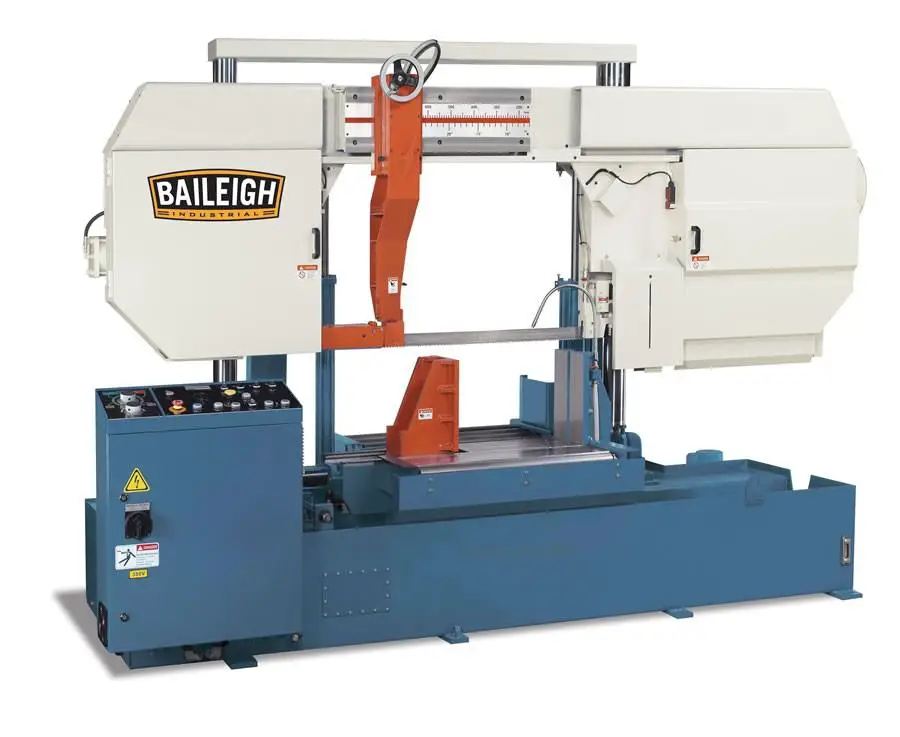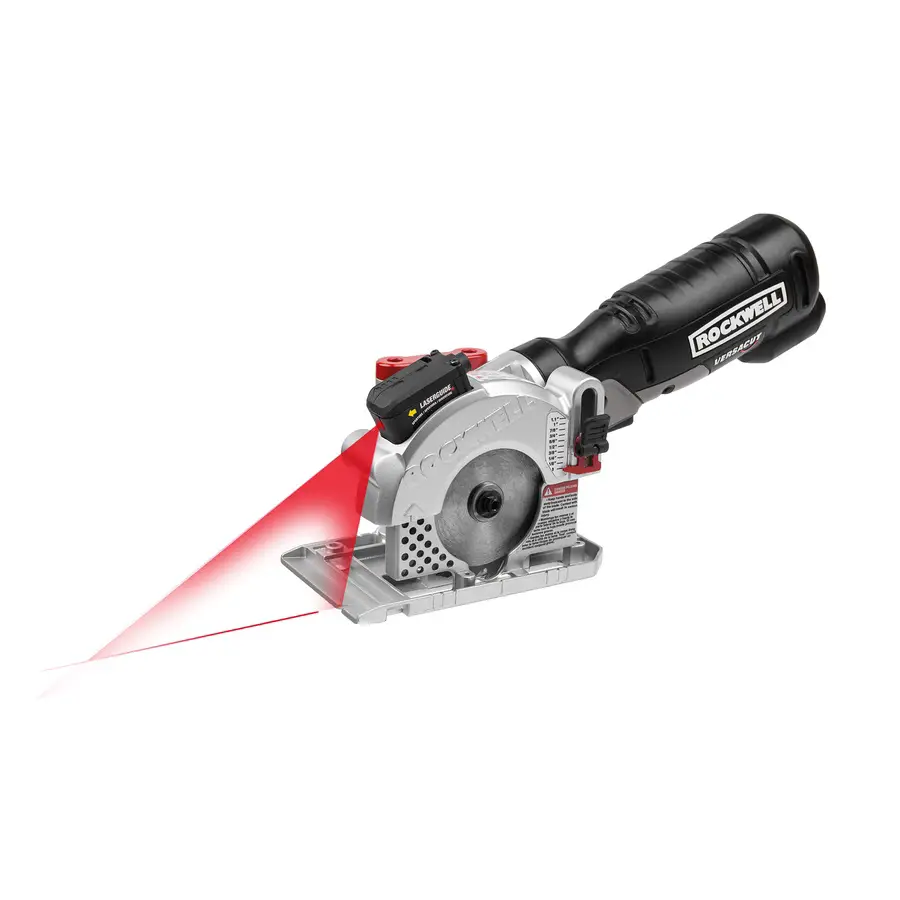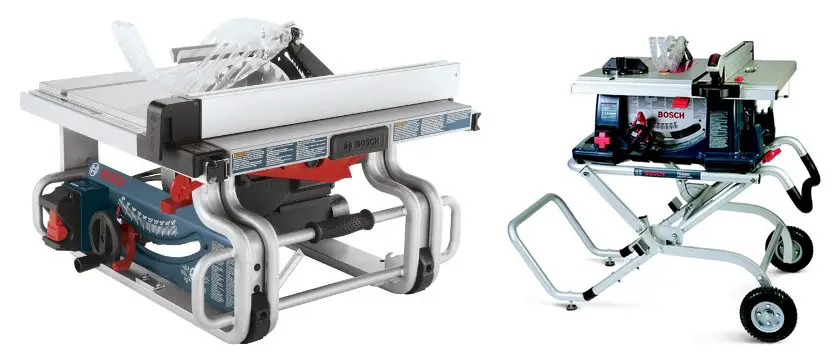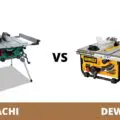Saws
What Is A Horizontal Band Saw?
Band saw machines consist of a thin rotating blade in a loop fed between two pulleys and they fall into three categories; horizontal, vertical and portable. This refers to the orientation of the blade. For a horizontal bandsaw the workpiece is held stationary and the saw moves vertically downwards into the workpiece, usually using the force of gravity to feed the cut. A vertical bandsaw has the blade stationary and the workpiece is moved horizontally into the blade.
A portable band saw is what it sounds like; the same looped blade around pulleys, but a much smaller, handheld version.
A horizontal bandsaw is typically used for cutting stock to length. With an appropriate blade it can be used to cut steel and harder materials. It can typically swivel and can thus make mitre cuts.
A vertical bandsaw is more versatile and can be used for cutting patterns/contours, polishing and filing as well as cutting to length. It is usually used for wood, plastics and softer metals.
The main drawback of the horizontal bandsaw is that you can’t cut patterns. If that’s what you want to do then buy a vertical bandsaw; it’s as simple as that. If you’re not interested in patterns then carry on reading.
A horizontal saw does a similar job to a power hacksaw. They range from small, manual, pulldown saws right up to large hydraulically controlled automated machines which can be left running unattended.
How to choose a band saw?
What features should you look for when choosing a bandsaw:
Mitre saw – The angle of the blade can be adjusted so that you don’t have to move the work piece.
Vice – Essential for holding your work piece in place securely.
Adjustable feed pressure – This is usually changed by adding or removing weights in the pedestal.
Variable blade speed – If you cut several different types of material then you’ll want to be able to change the blade speed.
Manual or automatic – If this is for your garage workshop then you’ll want a manual saw. However if it’s for your profession then you might want a CNC controlled automatic horizontal bandsaw.
How to use a saw?
- Clear the floor around the saw of any slip or trip hazards.
- Inspect the saw in its entirety, you’re looking for signs of wear and tear. Check your manufacturer’s manual for advice on sourcing replacement horizontal band saw parts.
- Make sure you’ve got the correct blade for the type of material you want to cut. Take a look at my article on horizontal band saw blades for advice on this.
- Check the blade for signs of wear or damage. Change the blade if you find any, these can cause the blade to catch on the workpiece, sending it flying.
- Make sure the blade is tension-ed correctly according to the width of the blade. Check the manual for how to do this. You need to keep the blade tension-ed to keep it tracking correctly. Too little tension will cause the blade to wander, too much will break it.
- Set the vice to the correct angle if you wish to make a mitre cut.
- Put on your safety goggles, gloves and mask.
- Never hold the work-piece by hand; make sure it’s firmly secured in a vice before beginning cutting. No using a saw horse here, make sure it’s definitely fixed in place.
- Make sure that the work-piece is not touching the blade before starting the machine. Always allow the saw to come up to full speed before beginning cutting.
Here’s a good video demonstrating an Ellis horizontal bandsaw:
That’s a decent primer on the horizontal band saw.





